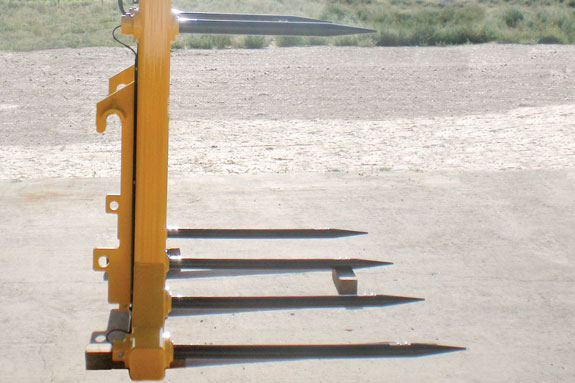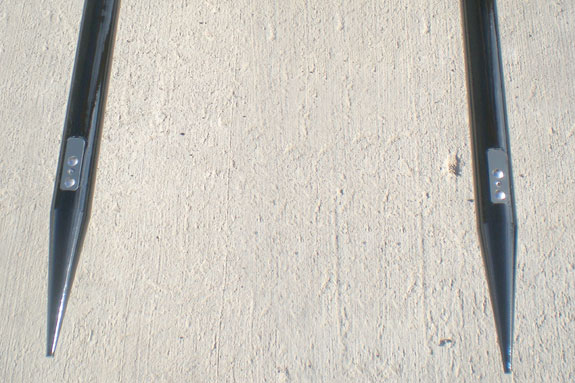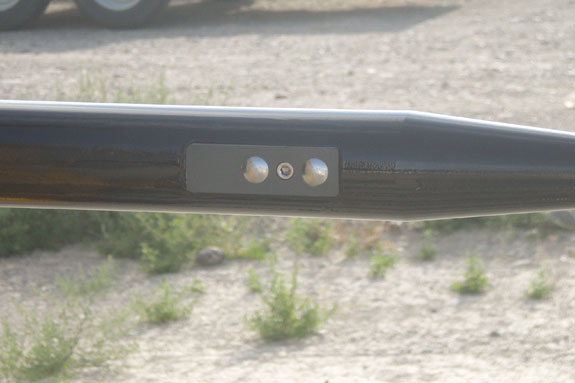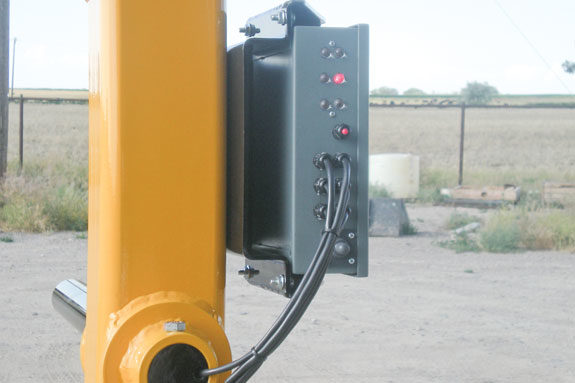But Robbins thought he had a better idea.
“I thought, well, you have to go out and grab the bales out of the field to load them, and then you have to grab them off the truck to put them in the stack, so why not just make it all one deal?
So when you’re jabbing your hay with the forks, why not be detecting moisture, too?” Robbins says.
Robbins decided to build a hayfork that tested the moisture content in every bale that is picked up. He designed a set of forks that fit on the front of a loader or similar equipment.
Each of the six forks have a probe embedded near the end. When one of the probes detects moisture levels over 15 percent, a red light on the control box turns on.
The control box, which is powered by batteries, is located on the top of the fork where the operator can easily see it from his seat.

“I can see where this could have a big effect and be a big blessing to the farmer. If he has to keep the hay for six months before he sells it, he’ll know that he doesn’t have enough moisture to damage the hay. It’ll save the farmer for one, but it’s obviously going to save the dairyman because he didn’t have bad hay or even a hay fire,” Robbins says.

Don Gaalswyk, a dairyman in Castleford, Idaho, was one of Robbins’ first customers. Gaalswyk tested a hayfork for Robbins for more than a year and recently bought another one. He has been satisfied with how it works and is looking forward to using it for many years.
“What I’m hoping is that down the road the insurance company will take note and will give me a discount, or the fact that we don’t have any claims on our insurance for hay fires will save us money.
The insurance company has been impressed with the fact that I’ve been willing to spend some money to save some money. It’s not an immediate savings, but it could be a good savings down the road,” Gaalswyk says.
Gaalswyk instructs his employees that when they are unloading some hay and they see the red light turn on, they are to set the bale aside.
That way Gaalswyk can inspect it more closely later and decide what to do with it. Because there are six probes spread throughout the bale, there is less chance of stacking a bad bale than if it had been probed by hand just once.
Another feature that Gaalswyk appreciates is the automatic shut-off switch. If someone forgets to turn off the control box, it will automatically shut itself off. But when the operator returns, a motion sensor conveniently turns it back on.

“Any dairyman would be interested in the hayfork. Hay dealers would be interested in it so that they could offer better service to the point where they aren’t placing their reputation in jeopardy by putting wet hay in a stack,” Gaalswyk says. FG
Contact Nick Robbins at 208-539-5967 or robbinswelding@q.com









